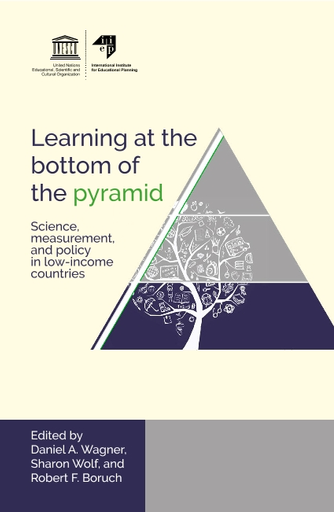Learning at the bottom of the pyramid: science, measurement, and policy in low-income countries

The United Nations development goals have consistently placed a high priority on the quality of education – and on learning. This has led to substantial increases in attention to, and international development assistance for, the improvement of education worldwide.
The development goals are mainly normative: that is, they tend to emphasize averages across nations, with relatively limited attention to variations within countries and to those performing at the low end of
the distribution.
The Conference on Learning at the Bottom of the Pyramid, held in March 2017 at the University of Pennsylvania, aimed to focus attention on this issue. It brought together experts from around the world to
explore the scientific tensions related to understanding learning among poor and marginalized populations in low-income countries – those at the ‘bottom of the pyramid’ or BoP (Wagner and Castillo, 2014).
The development goals are mainly normative: that is, they tend to emphasize averages across nations, with relatively limited attention to variations within countries and to those performing at the low end of
the distribution.
The Conference on Learning at the Bottom of the Pyramid, held in March 2017 at the University of Pennsylvania, aimed to focus attention on this issue. It brought together experts from around the world to
explore the scientific tensions related to understanding learning among poor and marginalized populations in low-income countries – those at the ‘bottom of the pyramid’ or BoP (Wagner and Castillo, 2014).
Year:
Organisation:
UNESCO, International Institute for Educational Planning
Keywords:
learning, low-income countries, Education, Access to Education
Marginalized & Vulnerable group:
All
Topic:
System wide approach, Curriculum
Level of Education:
Across the education sector
Type of Resources:
Research & Policy Papers
Country/Region:
All, Africa, Arab States, Asia & the Pacific, Europe & North America, Latin America & the Caribbean
Language of Publication:
English